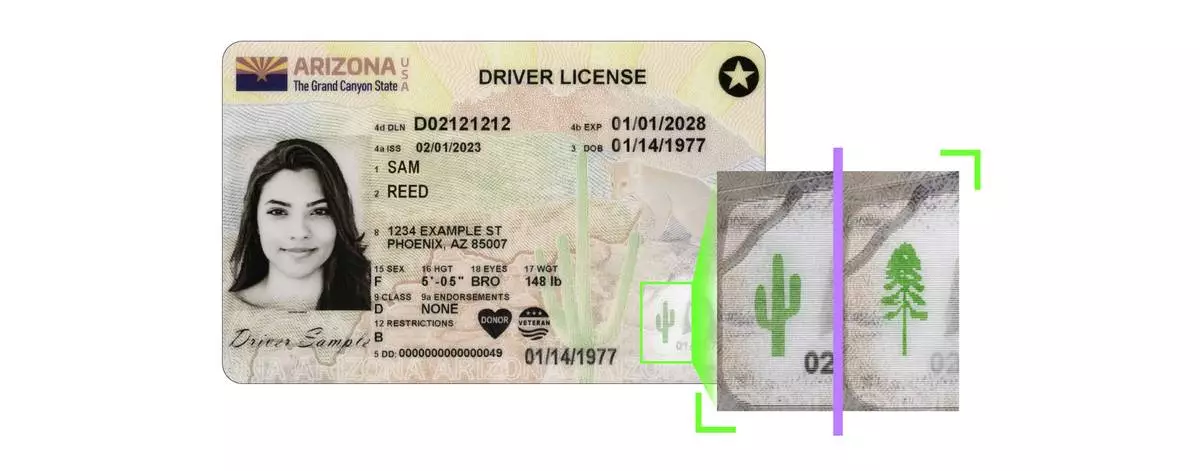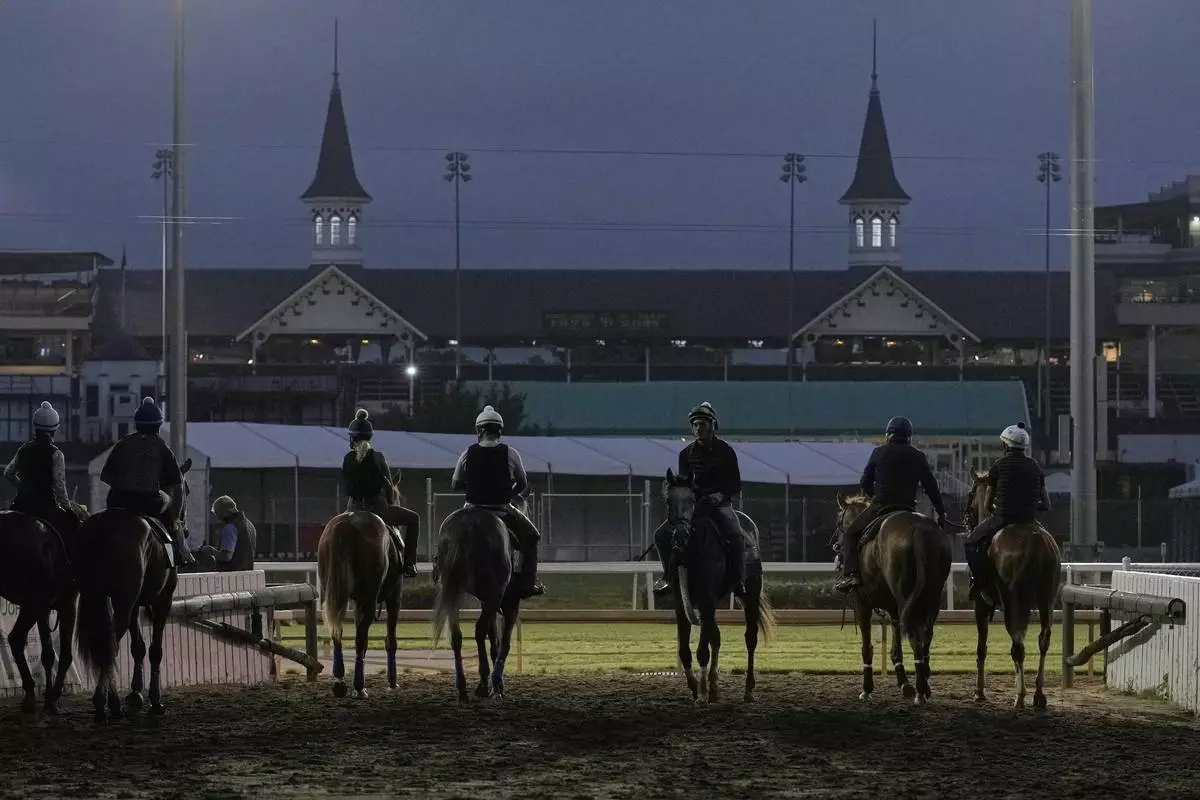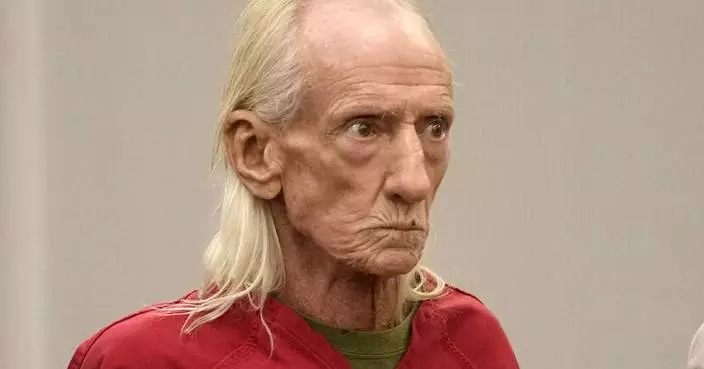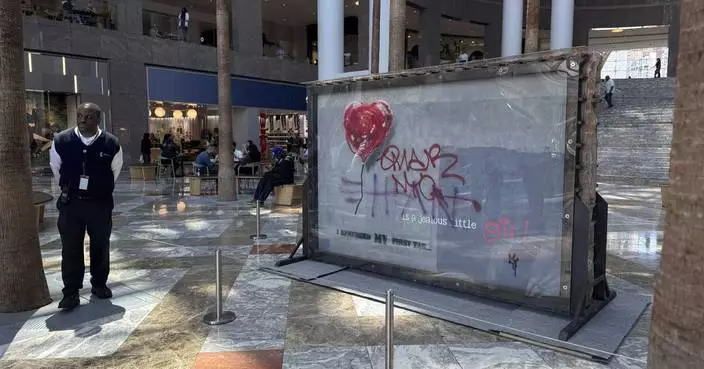RESTON, Va.--(BUSINESS WIRE)--Apr 22, 2025--
With therecent updateof its Document Reader SDK, Regula became the first identity verification (IDV) vendor to make it possible to verify all the dynamic security features of documents in real time. With the latest addition of Dynaprint® checks, the solution ensures more robust physical document authentication during remote onboarding. The innovation has arrived at a time when58% of businessesglobally face fake or modified IDs during digital onboarding.
This press release features multimedia. View the full release here: https://www.businesswire.com/news/home/20250422724077/en/
Dynaprint in the Arizona’s driver’s license (Photo: Regula)
Dynaprint ® is a dynamic security feature consisting of two different images printed with lenticular technology. Depending on the angle of observation, only one image is visible at a time. Like all other dynamic security features, Dynaprint is crucial for securing identity documents from tampering, since it’s a tricky task to fake it without special equipment. Previously, it was feasible to verify Dynaprint only on-site with the help of special equipment. However, Regula has made it possible to check it online via a smartphone to ensure you are dealing with a live physical ID.
At the moment, Regula Document Reader SDK is the only IDV solution on the market that supports major dynamic security features, including Dynaprint®, for document liveness verification. At the moment, no other vendor features this level of protection for remote document checks.
This enhancement complements existing checks for other visible dynamic security features, such as holograms, optically variable inks (OVI), and multiple laser images (MLI). By prioritizing document liveness checks in its solution, Regula helps businesses and government institutions combat a wide range of presentation attacks, such as screen replays, injections, and printouts, and effectively detect manipulated IDs.
“With every update, our goal is to raise the bar for what reliable identity verification looks like. The addition of Dynaprint® checks in our Regula Document Reader SDK is more than a technical upgrade—it’s a significant enhancement in verifying the physical presence of an ID. When dynamic features like this are validated in real time, it becomes nearly impossible for fraudsters to succeed with deepfakes or static document copies,” says Ihar Kliashchou, Chief Technology Officer at Regula.
What else is new?
Alongside improved liveness verification, this update to Regula Document Reader SDK also included support for 432 new identity documents, bringing the total number to more than 15,000 documents from 251 countries and territories. Among them, for example, are the newest Japanese passport introduced in late March 2025, and the new Philippine National ID.
The latter brings a unique verification challenge: unlike other IDs, the Philippine National ID does not contain a handwritten signature, relying instead on an encrypted QR code with a digital signature to prove document integrity. While the QR code can be verified via the governmental portal, Regula Document Reader SDK offers a more robust and comprehensive solution for checking the ID’s authenticity. It ensures that the encoded information hasn’t been altered in any way, and that the digital signature is valid. Additionally, Regula’s solution performs multiple in-depth checks, cross-validating data from various document zones, and reading both visible and encrypted data.
Explore how Regula’s Dynaprint® verification can elevate your identity verification workflows on Regula’s website.
About Regula
Regula is a global developer of forensic devices and identity verification solutions. With our 30+ years of experience in forensic research and the most comprehensive library of document templates in the world, we create breakthrough technologies for document and biometric verification. Our hardware and software solutions allow over 1,000 organizations and 80 border control authorities globally to provide top-notch client service without compromising safety, security, or speed. Regula has been repeatedly named a Representative Vendor in the Gartner® Market Guide for Identity Verification.
Learn more at www.regulaforensics.com.


Dynaprint in the Arizona’s driver’s license (Photo: Regula)
When NBC carried the Kentucky Derby for the first time in 2001, the broadcast lasted only 90 minutes.
On Saturday, when it carries the Run for the Roses for the 25th time, 90 minutes wouldn’t be enough for all the feature stories that will run leading up to post time.
NBC Sports will present 12 1/2 hours of coverage across two days on NBC, USA Network and Peacock. There will be five hours for Friday’s Kentucky Oaks on USA Network and Peacock. Saturday’s coverage begins on USA Network at noon ET before moving to NBC at 2:30 p.m. while Peacock will stream all 7 1/2 hours.
“So much has changed since we first started in 2001. At that time, we thought 90 minutes to cover a two-minute race. How are we going to fill all this time? Now we are still trying to figure out how we’re going to get this story in and that story in because there are so many great stories to tell,” said Donna Brothers, the only member of the broadcast team involved with all 25 Derbys on NBC.
NBC has done five hours of coverage on the main network on Derby Day since 2018. Sam Flood, the executive producer and president of NBC Sports Production, said the true evolution behind adding more hours while making the coverage appeal to a cross-section of viewers began after he produced his first Derby in 2006.
“I remember getting done with the show, which I think was two hours. I kept thinking, we can do so much more,” Flood said. “There are so many assets here that should be showcased, and that’s when we started blowing it out, adding more hours and slowly shifting more and more hours on to NBC and off the cable platforms.”
The expansion has also included the Kentucky Oaks. It started airing on Bravo in 2009 before moving to the NBC Sports Network and then USA Network.
The Derby broadcast has evolved into one of the most diverse sports events that NBC does yearly and is on par with the Olympics, which it carries once every two years, and the Super Bowl, which it has once every four years.
It also might be the only place where a viewer can see fashion, recipes from one of the hosts of Bravo’s “Top Chef,” and race predictions from NBC News chief data analyst Steve Kornacki.
Mike Tirico, the host of NBC’s coverage since 2017, said doing the Derby served as good preparation for hosting the Olympics as well as a stint as a guest host on the “Today” show last week.
“My time doing the Derby helped me to do the ‘Today’ show last week, not vice versa,” he said. “This show is so cool. It goes from speed figures to fascinators. It goes from betting to bourbon. We cover it all in the five hours with a great team of people who dive in and take their space and own it. We all build towards the race. The audience does the same.”
Tirico succeeded Tom Hammond as host. Hammond, a University of Kentucky graduate, was a guiding force around NBC’s early coverage and introducing the sport’s most prominent personalities to viewers.
Lindsay Schanzer, the supervising producer of NBC’s coverage, said one of the advantages of having nearly 4 1/2 hours leading up to post time at 6:57 p.m. ET is the chance to focus on the stories of the 20 horses that will line up in the starting gate.
Among the stories planned are the return of trainer Bob Baffert — who served a three-year suspension after Medina Spirit failed a drug test — 89-year-old trainer D. Wayne Lukas and Michael McCarthy, the trainer of prerace favorite Journalism, whose family was displaced from home in Southern California due to the wildfires.
Because of the many different topics in the broadcast, Schanzer has an interesting approach in how she books the coverage with what she calls a colors document, where each element of coverage has its own color.
“I like to look at it from a broad perspective to make sure there’s not too much of one color in one area, and every color is kind of represented across the show so that if you’re watching it, you’re getting a little bit of a taste of everything,” she said. “One color could be a fashion element, one could be Kornacki’s insights, one could be an interview with a horseman. I try to look at it in a holistic way like that.”
The approach has certainly worked. Last year’s broadcast averaged 16.7 million viewers, the largest Derby audience since 1989. That included an average minute audience of 714,000 streaming on Peacock.
Overall, 11 of the past 15 Derbys held in May have averaged at least 15 million.
“We’ve had all kinds of things happen (since 2001), and that’s what’s so unique about the sport, but specifically about the Derby,” said Jon Miller, NBC Sports president of acquisitions and partnerships. “You have 20 horses that come into that gate and long shots that can pull off the upset. You have favorites, you have great ownership stories, and you have legendary trainers. Who knows who is going to surprise this year? But that’s what’s great about it.”
AP horse racing: https://apnews.com/hub/horse-racing and Derby coverage: https://apnews.com/hub/kentucky-derby

Horses workout at Churchill Downs Wednesday, April 30, 2025, in Louisville, Ky. (AP Photo/Charlie Riedel)






















































